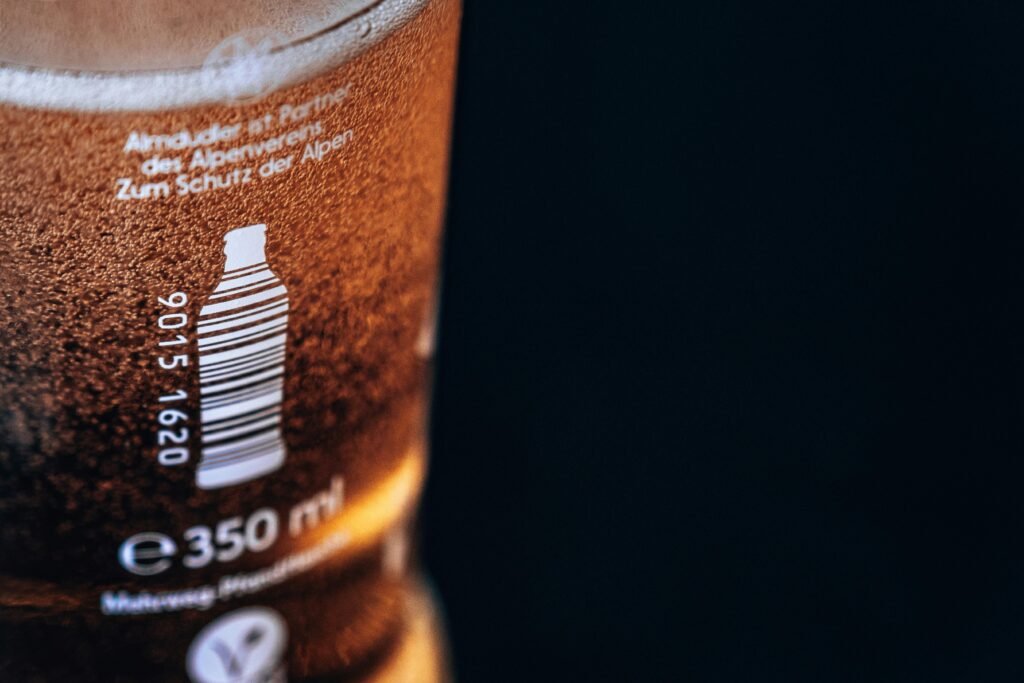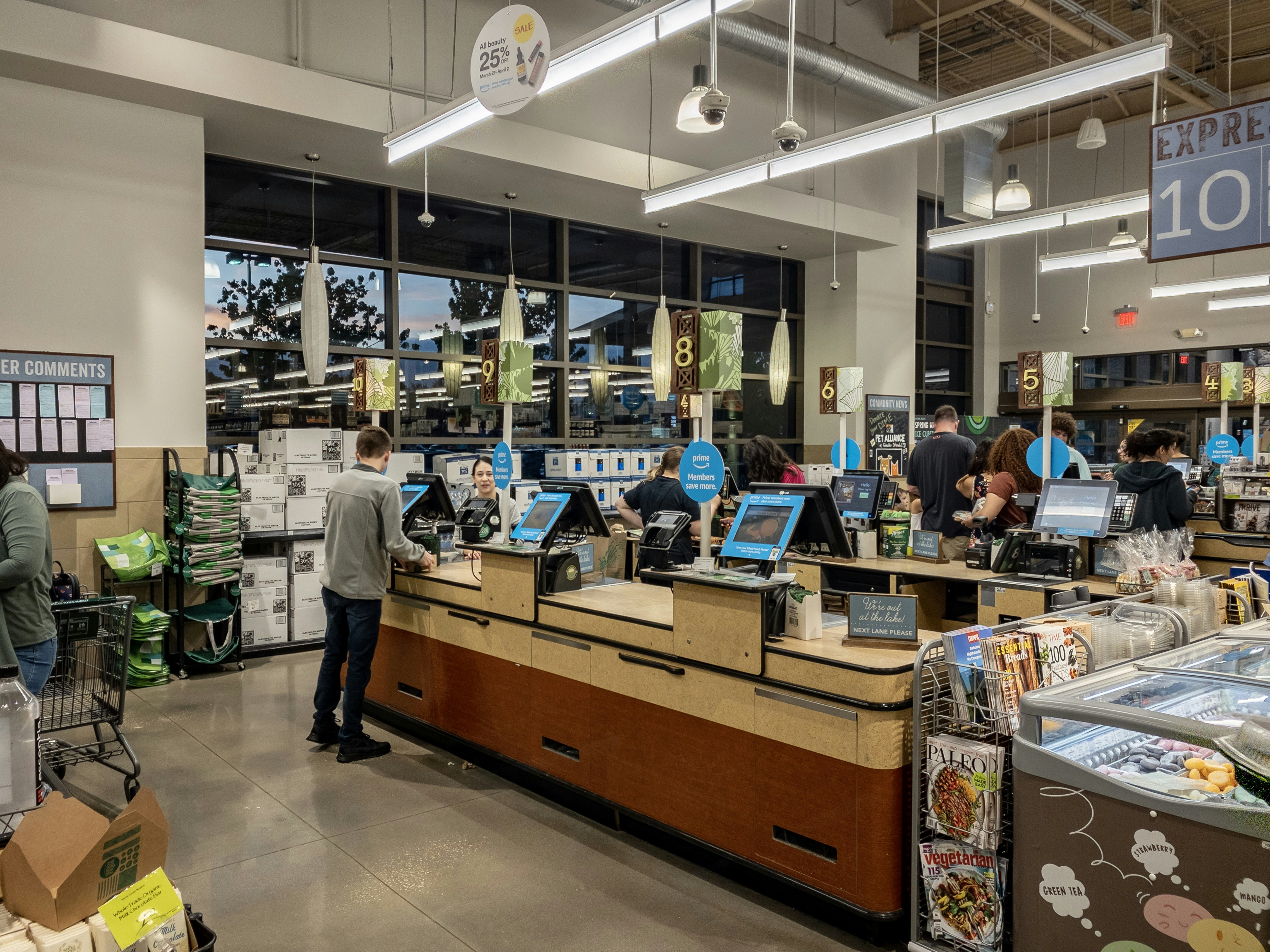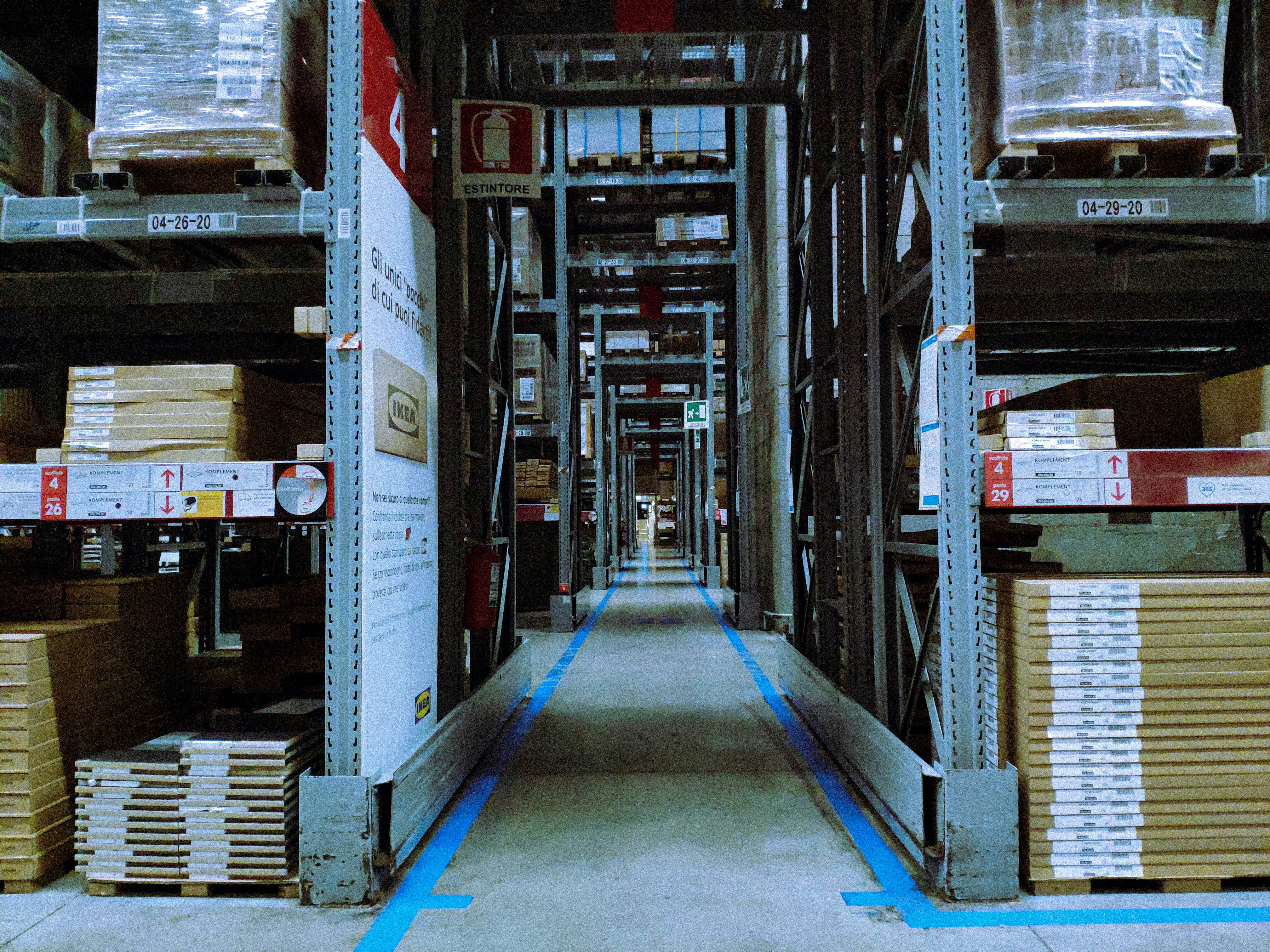Introduction to Barcode Labels
Barcode labels are essential tools that facilitate the identification and tracking of products in various sectors, including retail, logistics, and manufacturing. At their core, these labels consist of a unique pattern of bars and spaces that encode information, typically about the product they are affixed to. The significance of barcode labels cannot be understated; they streamline processes such as inventory management, point-of-sale transactions, and shipping procedures, thereby enhancing operational efficiency.
There are several types of barcodes, each serving distinct purposes. The most common types include one-dimensional (1D) barcodes, such as UPC (Universal Product Code) and EAN (European Article Number), which are primarily used in retail environments to manage product information. In contrast, two-dimensional (2D) barcodes, like QR codes (Quick Response codes) and Data Matrix codes, store more detailed information and are increasingly used not only for product tracking but also for marketing purposes, offering consumers a way to access additional content with a simple scan.
Effective design of barcode labels is critical for optimal scanning performance and data accuracy. Factors such as label size, color contrast, and barcode placement can significantly impact the readability of a barcode. Poor design can lead to misreads, slow scanning speeds, and even inventory discrepancies, which can adversely affect brand reputation and consumer satisfaction. Therefore, understanding the principles of barcode design is vital for businesses aiming to maintain efficient operations and ensure accurate data capture.
Understanding Barcode Types
Barcodes are essential tools utilized across various industries to streamline operations, enhance inventory management, and improve customer interactions. Among the myriad of barcode types available, each possesses distinct characteristics and applications that cater to specific needs. This section will explore some of the most commonly used barcode types: UPC, QR codes, Code 39, and Data Matrix.
The Universal Product Code (UPC) is one of the most widely recognized barcodes, primarily used in retail environments for tracking products. With its linear format, a UPC consists of 12 numerical digits and is effective for scanning at checkout points. The benefits of using UPC codes include their simplicity and the ability to integrate seamlessly with point-of-sale systems. Thus, they remain a popular choice for consumer goods.
In contrast, Quick Response (QR) codes are two-dimensional barcodes that can store more information than their linear counterparts. QR codes are increasingly used in marketing campaigns, allowing businesses to provide customers with immediate access to websites or promotional content by simply scanning the code with a smartphone. Their versatility and ability to hold data such as URLs, contact information, and even payment options make them an excellent choice for engaging consumers.
Code 39 is another barcode type primarily utilized in industrial settings. This alphanumeric barcode is capable of encoding both letters and numbers, making it suitable for labeling a variety of products and assets. One significant advantage of Code 39 is its self-checking feature, which enhances data accuracy during scanning. However, it requires larger amounts of space for practice and may not be ideal for all applications.
Finally, the Data Matrix barcode is notable for its compact size and ability to hold a significant amount of data within a small area. Its two-dimensional layout allows for encoding various types of information. This barcode is often employed in applications such as electronics and pharmaceuticals, where space constraints are common. Selecting the right barcode type requires careful consideration of the intended use, design requirements, and the environment in which it will operate.
Key Elements of Barcode Label Design
Effective barcode label design is foundational to ensuring accurate and efficient scanning processes, which in turn supports inventory management, tracking systems, and other logistics operations. There are several key elements that contribute to a functional barcode label, with barcode dimensions playing a pivotal role. The size of the barcode must conform to industry standards, as overly small dimensions can hinder the scanner’s ability to read the barcode accurately, while overly large ones may not fit the allocated label space.
Contrast is equally crucial in barcode label design. A high contrast between the barcode’s dark bars and its light background not only enhances visibility but also facilitates faster scanning. Poor contrast can lead to scanning errors, making it essential to select colors that maximize readability. Additionally, whitespace around the barcode area should not be overlooked. Adequate whitespace prevents interference from surrounding elements, allowing scanners to quickly and accurately capture the barcode’s data.
Text size and font selection are also important components. While barcodes serve as a primary means of encoding information, human-readable text often accompanies them for reference. The text should be legible, with a size that is suitable for easy reading under typical conditions. Selecting a clear, professional font can further enhance the overall look and ensure that the text’s visibility complements the barcode’s functionality.
In sum, each of these design elements—barcode dimensions, contrast, whitespace, text size, and font—play a significant role in the overall effectiveness of barcode labels. By carefully considering these factors, businesses can create barcode labels that not only comply with industry standards but also improve scanning efficiency and accuracy, leading to increased operational effectiveness.
Importance of Color and Contrast
The color and contrast of barcode labels play a pivotal role in ensuring successful scanning and visibility. A well-designed barcode must be both aesthetically pleasing and functional, as the choice of colors can significantly affect how effectively a barcode scanner interprets the data encoded within it. Favorable color combinations enhance readability, while poor choices can hinder scan success and lead to operational inefficiencies.
Generally, high contrast between the barcode’s background and the bars is crucial for optimum scanning performance. The most recognizable color combination is black bars on a white background, as this configuration provides maximum contrast, facilitating easier detection by scanners. However, variations, such as dark blue or red on a light background, can also work well if the contrast is sufficiently pronounced. It is important to avoid colors that are too similar in hue or brightness; for instance, light blue on a white surface offers inadequate contrast, resulting in scanning difficulties.
In addition to contrast, color psychology should also be considered when designing barcode labels, particularly for branding purposes. Colors can evoke emotions and associations that may impact consumer behavior. For example, a warm color palette may create a perception of urgency, while cooler tones tend to suggest tranquility and reliability. Hence, when selecting colors, it is advisable to balance these psychological factors with the technical requirements for scanability.
Furthermore, consistent testing is recommended during the design process to ensure that color choices do not impede scanning capabilities. Barcodes should be printed and tested in various lighting conditions to confirm that they remain legible and scannable. By paying attention to the importance of color and contrast in barcode label design, businesses can create products that are not only visually appealing but also functionally sound. This strategic approach leads to an enhanced customer experience and operational efficiency.
Making Barcodes User-Friendly
Designing barcode labels that prioritize user-friendliness can significantly improve the efficiency of scanning and usability in various environments. One of the fundamental strategies to accomplish this is the inclusion of human-readable text alongside the barcode itself. By providing a clear textual representation of the encoded data, users can quickly identify the product or information without relying solely on scanning. This feature is particularly beneficial in scenarios where scanning devices may fail or when users are assessing multiple items at once.
Utilizing an intuitive layout further enhances the functionality of barcode labels. This involves organizing the label design in a manner that directs the user’s attention to essential elements, such as the barcode, product name, and any additional relevant information. Employing a logical hierarchy through font size, color contrast, and placement can guide users effectively, reducing any potential confusion. Labels that are cluttered or poorly organized may lead to scanning errors or misidentification of products, ultimately impacting operational efficiency.
Furthermore, the placement of barcode labels plays a critical role in ensuring user-friendliness. Positioning the barcodes in accessible locations on products or packaging can facilitate scanning and retrieval processes. It is advisable to consider the natural flow of interaction; for instance, placing barcodes on the front or side of products aligns with common scanning practices. Additionally, avoiding placement on curved or uneven surfaces can minimize obstacles faced during the scanning process. By adhering to these practices, businesses can enhance the overall experience for users, resulting in smoother inventory management and reduced time spent on manual corrections.
Testing and Quality Control
Ensuring the quality of barcode labels is a crucial aspect of the design process, as it directly affects readability, scanning accuracy, and overall user experience. Before these labels go into production or distribution, thorough testing should be conducted to confirm that they meet industry standards and serve their intended purpose effectively. Quality control methods can vary, but they typically involve a combination of visual inspection and automated scanning techniques.
Initially, visual inspection plays an essential role in identifying any apparent defects, such as misprints, smudges, or alignment issues. These visual checks should encompass not only the barcode itself but also the surrounding design elements that may interfere with scanning. Further, it is advisable to verify that the label’s material is appropriate for its environment, as temperature extremes or exposure to moisture can impact barcode integrity.
Following visual inspections, testing the barcode’s scannability is integral. Using various barcode scanners—ranging from handheld readers to mobile devices equipped with scanning applications—is recommended, as this simulates real-world conditions more accurately. During this phase, attention should be paid to factors such as scan speed and accuracy, with adjustments made as necessary to enhance performance. It is often beneficial to conduct tests at multiple angles and distances to encompass potential scenarios encountered during practical use.
Incorporating industry standards into the testing process is imperative. Familiarity with guidelines from organizations, such as GS1 or ISO, provides a framework for evaluating barcode label design and quality. By aligning with these specifications, designers can ensure their labels effectively communicate product information while remaining compliant.
Lastly, maintaining a controlled environment for testing, when possible, can minimize external variables that may compromise barcode quality. Implementing a robust testing and quality control strategy will ultimately lead to greater efficiency and trust in barcode applications across various industries.
Software and Tools for Barcode Design
Creating effective barcode labels is integral to enhancing inventory management and product identification. The selection of suitable software and tools plays a pivotal role in the design process. Various programs offer a range of features tailored to meet different user needs and expertise levels. Understanding these options can help streamline the barcode label creation process.
One popular software choice for barcode design is Adobe Illustrator. This vector-based graphic design tool is favored for its flexibility and precision. Users can easily create custom barcode labels, integrating various design elements. Its extensive library of design features makes it an excellent option for those looking to customize barcode visuals. However, it may require a learning curve for newcomers unfamiliar with graphic design concepts.
Another effective tool is BarTender, which specializes in label printing and barcode design. This program is designed for businesses needing robust variable data printing capabilities. With a user-friendly interface, BarTender allows users to create and print high-quality barcodes effortlessly. Its compatibility with various printers also ensures that labels are produced accurately across different devices.
For users seeking simplicity, online tools such as Barcode Generator provide an intuitive experience. These web-based programs allow users to input data and instantly generate barcodes without the need for software installation. Such solutions are ideal for individuals or small businesses with minimal design needs. Additionally, online tools often include features for downloading barcodes in different formats.
When selecting a tool for barcode label design, it is crucial to consider the specific requirements of the project. Factors such as ease of use, customization options, and compatibility with existing systems should be weighed. Ultimately, choosing the right software can significantly enhance the efficiency and quality of barcode label creation.
Common Mistakes to Avoid
Creating effective barcode labels requires careful consideration and attention to detail. However, several common mistakes can hinder the functionality and readability of these labels. One frequent pitfall is improper sizing. Barcodes that are too small may become unreadable, especially when scanned from a distance or with lower-quality scanners. Conversely, excessively large barcodes can consume valuable space on packaging, leading to clutter and confusion. It is crucial to ensure that barcodes are designed at the appropriate size to maintain their scannability and effectiveness in real-world applications.
Another critical aspect to consider is the contrast between the barcode and its background. Insufficient contrast can result in scanning difficulties, as the barcode’s lines and spaces may blend into the background. To create optimal readability, it is advisable to use high-contrast color combinations, such as black on white or dark colors on lighter backgrounds. This enhances visibility and ensures that barcode scanners can easily recognize the encoded data.
Neglecting to test labels before use is yet another common oversight. Even the most meticulously designed barcode can fail if the label itself is not tested under practical conditions. Factors such as lighting, distance, and the scanning devices being used can affect scan success rates. Therefore, conducting thorough tests in various environments will help identify any issues early on, allowing for adjustments to be made before the labels are implemented widely.
In conclusion, avoiding these common mistakes—improper sizing, insufficient contrast, and neglecting pre-use testing—will greatly enhance the effectiveness of barcode labels. By recognizing and addressing these errors, designers can create professional barcode labels that function seamlessly in various contexts.
Future Trends in Barcode Label Design
The field of barcode label design is evolving rapidly, driven by advancements in technology and changing consumer preferences. One notable trend is the increased adoption of dynamic QR codes. Unlike static QR codes, dynamic versions allow for alterations after printing, enabling businesses to update information without the need for reprinting labels. This flexibility provides significant advantages in marketing campaigns, fostering engagement by linking consumers to live content, promotions, or product information directly via their mobile devices.
Integration with mobile technology stands at the forefront of barcode label innovation. As smartphones become ubiquitous, the capability to scan QR codes with simple camera functions has accelerated their acceptance among consumers. This trend emphasizes the need for designs that are not only visually appealing but also user-friendly, so as to encourage interaction. Furthermore, the use of augmented reality (AR) in conjunction with QR codes is emerging, offering users an interactive experience that brings products to life through their screens, enhancing the shopping journey.
Moreover, advancements in printing techniques play a critical role in shaping the future of barcode labels. Technologies such as digital printing enable faster production speeds, greater customization options, and improved print quality. This results in clearer barcodes and increased scannability, which is essential for various applications, from retail to logistics. Sustainable printing methods are also gaining traction, as businesses seek to reduce their environmental footprint. The shift towards eco-friendly materials and inks reflects a broader commitment to sustainability, aligning barcode design with contemporary values.
The impact of these trends transcends sectors, affecting retail, logistics, pharmaceuticals, and even education. As industries embrace digital transformation, barcode label design is poised to become more versatile and impactful, enhancing operational efficiency and driving consumer engagement.
© barcodly.com- All rights reserved





